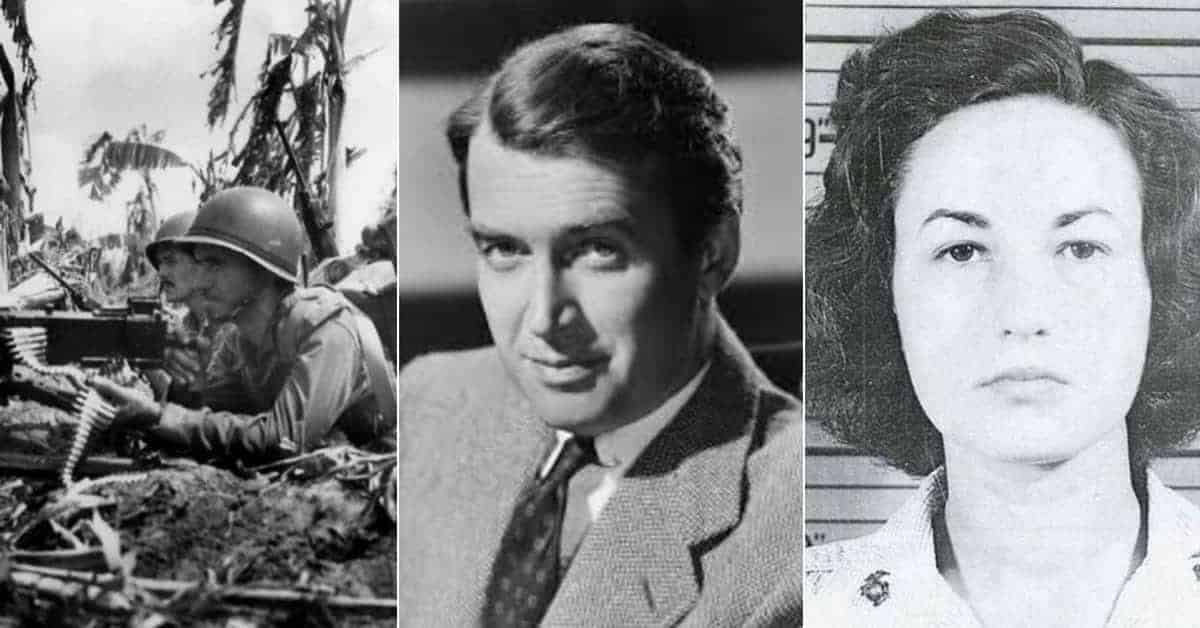http://www.thesmokinggun.com/documents/celebrity/lenny-bruces-gay-naval-ruse
We often view celebrities and famous people solely through the lens of what we see on screen, or what we read of them in the news and gossip columns. However, at some point before those famous people actually became famous or celebrities, most of them were just like everybody else: Joe and Jane Schmoes making their way through life as best they knew how, and occasionally facing, confronting, and dealing in their own ways with the larger events surrounding them and shaping their world.
Few events shaped today’s world more than WWII, and many of the Greatest Generation ended up as veterans. Returning to civilian life, some ended up as celebrities, and their public image, whether sunny and funny or grim, often hid the fact that they had participated in the greatest conflict the world had ever known. Even those who were already established celebrities when WWII erupted, had to figure out how to deal with it.
Some took advantage of their connections to avoid military service and the risk to life and limb – their ranks include some of the biggest “tough manly man” icons of the post-WWII era, who became famous for their on-screen portrayals of those who had stepped up to the plate the macho actors had shied away from in real life. Others put on uniform, but used their connections to secure safe postings far from danger. Others yet, although they could easily have stayed out of it, put their celebrity aside, stepped up to the plate, and put their lives on the line.

Following are 12 famous figures, celebrities and social activists, whom most people don’t know had also been WWII veterans:

Johnny Carson
Acclaimed talk show host and comedian Johnny Carson (1925 – 2005) hosted The Tonight Show from 1962 to 1992, for which he was inducted into the Television Academy Hall of Fame, won a Peabody Award, as well as six Emmys. He also received a Kennedy Center Honor, and was awarded the Presidential Medal of Freedom – America’s highest civilian award. He was also a WWII US Navy veteran.
From early childhood, Carson exhibited a talent for reeling them in. At age 12, he came across a book on magic tricks and decided he would become a magician. He bought a mail-order magician’s kit, and started doing tricks to entertain family and friends. His favorite were card tricks, and he took to following people around with a deck of cards while pestering them to “pick a card. Any card” – which became a signature expression during his TV career.
After graduating high school, 17-year-old Carson joined the US Navy in 1943. He sought to enter a pilot training program but was sent instead to the Navy College Training Program, which put tens of thousands of officer candidates through a course of study in colleges and universities preparatory to their commissioning. Carson was sent to Columbia University, and after completing his course, was commissioned an ensign in 1945.
He was sent to the Pacific and assigned to the battleship USS Pennsylvania as a communications officer. Carson also took up amateur boxing while in the Navy, and ran up a 10-0 record, with most of the matches taking place aboard Pennsylvania. He had been en route to the combat zone in August of 1945 when the war ended, so saw no combat. However, he did see its aftermath: Pennsylvania had been torpedoed two days before he joined the ship. The damaged vessel sailed to Guam for repairs, and as the newest and most junior officer, Carson was tasked with the removal of 20 dead sailors.
Reminiscing about his naval experience, Carson thought that the highlight of his naval career was performing a card trick for James Forrestal, the notoriously cantankerous Secretary of the Navy. Forrestal was amused, and the realization that he could entertain somebody so crabby boosted Carson’s confidence. After the war, he graduated college then went to work for Red Skelton’s show as a TV writer. Moving to New York City, he became the host of The Tonight Show in 1962, and the rest is history.

